Canon RF 50mm f/1.2L Lens Review
Enjoying my time with Canon’s latest and greatest 50mm lens.

I began to worry about this review about a week into my time with the RF 50mm f/1.2L lens from Canon.
My process is simple: use the lens like I normally would. Take it to work shoots and personal shoots, carry it around with me, explore its capabilities, and take notes throughout the process about what I like and what I don’t like.
The first week with any piece of gear is a honeymoon period. We tend to be more forgiving, more excited, and less receptive to the little nuances that reveal themselves over the course of extended use.
As a result, by the end of that first week my notes were distinctly lopsided. Instead of a balanced set of pros and cons, I had a bunch of pros, and just two cons. That kind of imbalance makes for a boring review, one that suggests insufficient time spent with the gear or a lack of skill and context in evaluating it.
Thankfully, after that initial glow wore off, I began to form a more balanced opinion about it. Now, a month later, I’m ready to share a proper evaluation.
But first, I want to address the two cons that made their way onto my list in that first week, because I suspect they’ll factor into many people’s first impressions.
Meaningless Complaints
In retrospect, they seem pretty stupid to me, but my initial complaints boiled down to this:
- It’s large and heavy
- I can’t afford it
The former is a meaningless complaint about a lens like this. It’s not designed to be a casual lens for everyday carry. It’s a professional tool for working photographers. You can carry it around and use it in casual settings, but it’s not in its DNA to be discreet or portable.
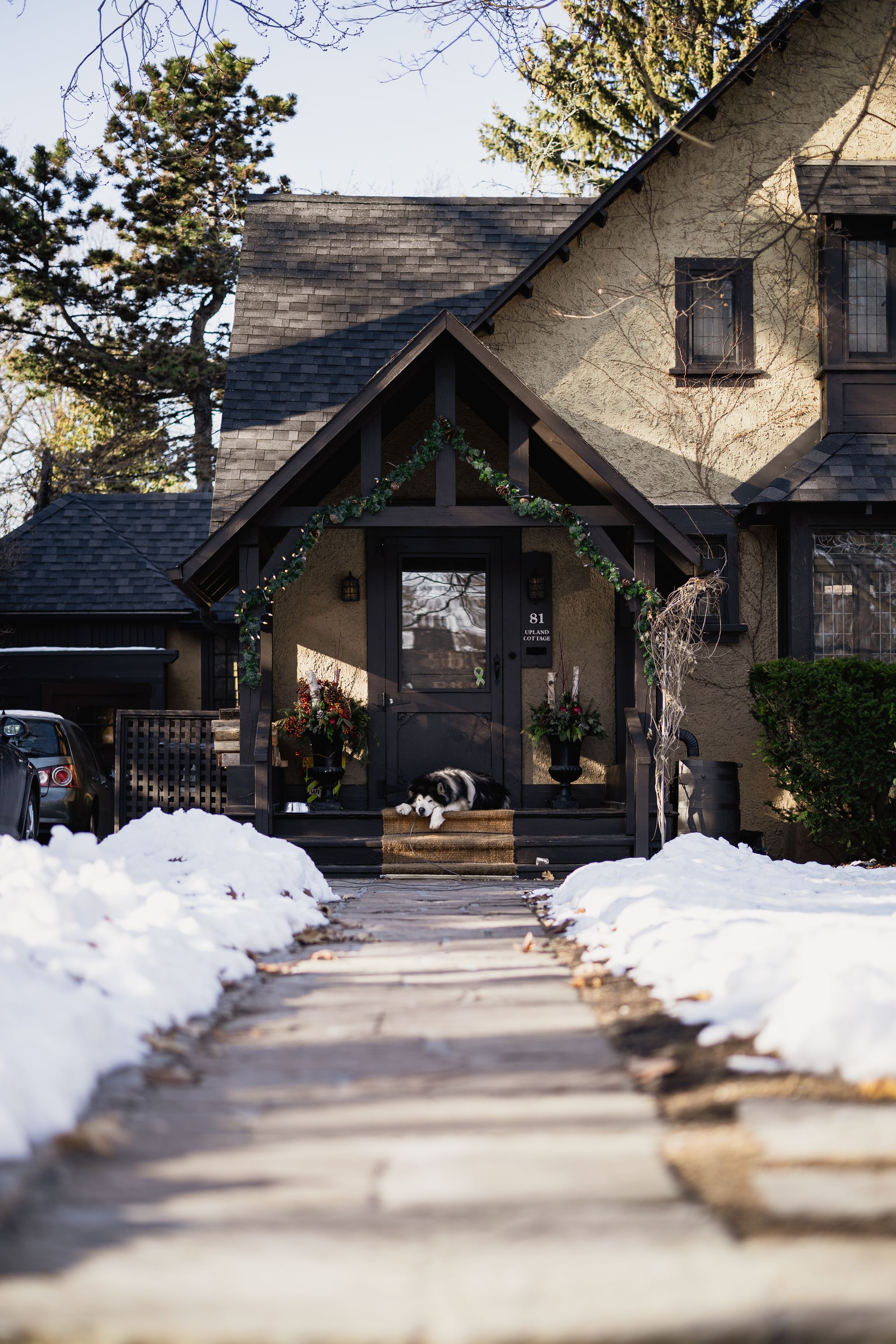
As for cost, that is what it is.
My ability or inability to afford a piece of gear has no bearing on how good that gear is. I’m not entitled to access just because I want a thing. It’s why I tend not to discuss prices in my reviews in general; whether or not something is affordable is not a judgement I can make for others. Nor is it relevant to evaluating its qualities unless the cost/value equation seems imbalanced.
In this case, it does not.
The lens is expensive, but there’s nothing else like it on the market. I came away from my time with it feeling confident that it’s worth the cost, even if that cost puts it out of my reach.

Design & Build
Canon’s new design language feels modern and sophisticated, and the RF 50mm is a handsome lens.
It’s weighty, but it doesn’t pull forward as much as you might expect it to given its physical size. The short flange distance of the RF mount allows Canon’s engineers to place more of the large glass elements toward the mount, shifting the centre of gravity toward the middle and improving comfort.
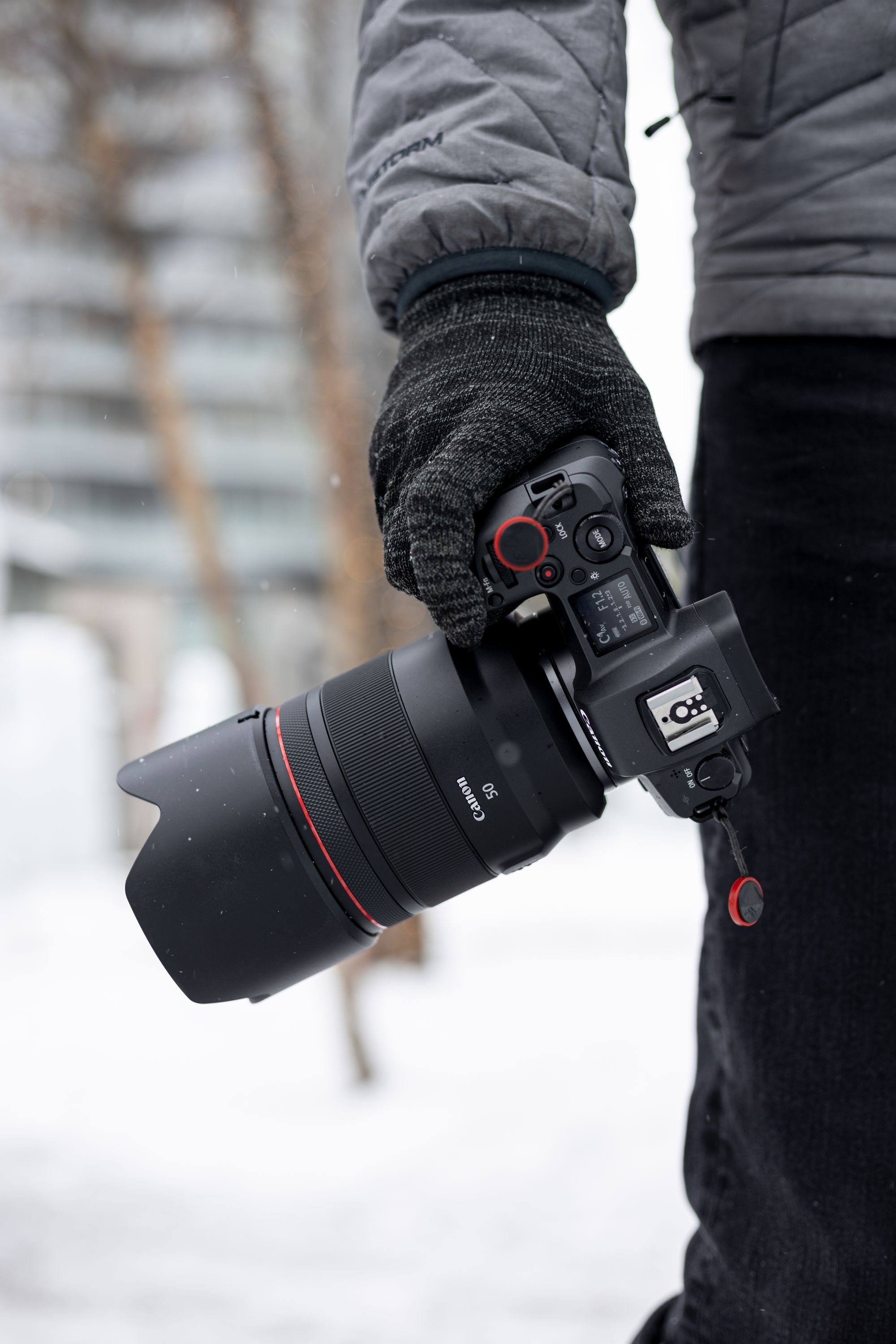 Photo courtesy of my friend, Thomas Wong.
Photo courtesy of my friend, Thomas Wong.
As far as its construction is concerned, I didn’t see anything that would worry me. Yes, the shell is largely polycarbonate rather than metal, but plastic has its advantages: better handling of temperature, less weight, and easier repairs. It does seem like it’ll be more susceptible to scratches and scuffs on the outer shell, but that doesn’t seem like a bad trade-off to me if it means the weight and overall durability are superior.
Canon claims that the RF 50mm is engineered with additional protection against shocks, allowing it to maintain its performance even in difficult circumstances, like those that traveling photojournalists might encounter.
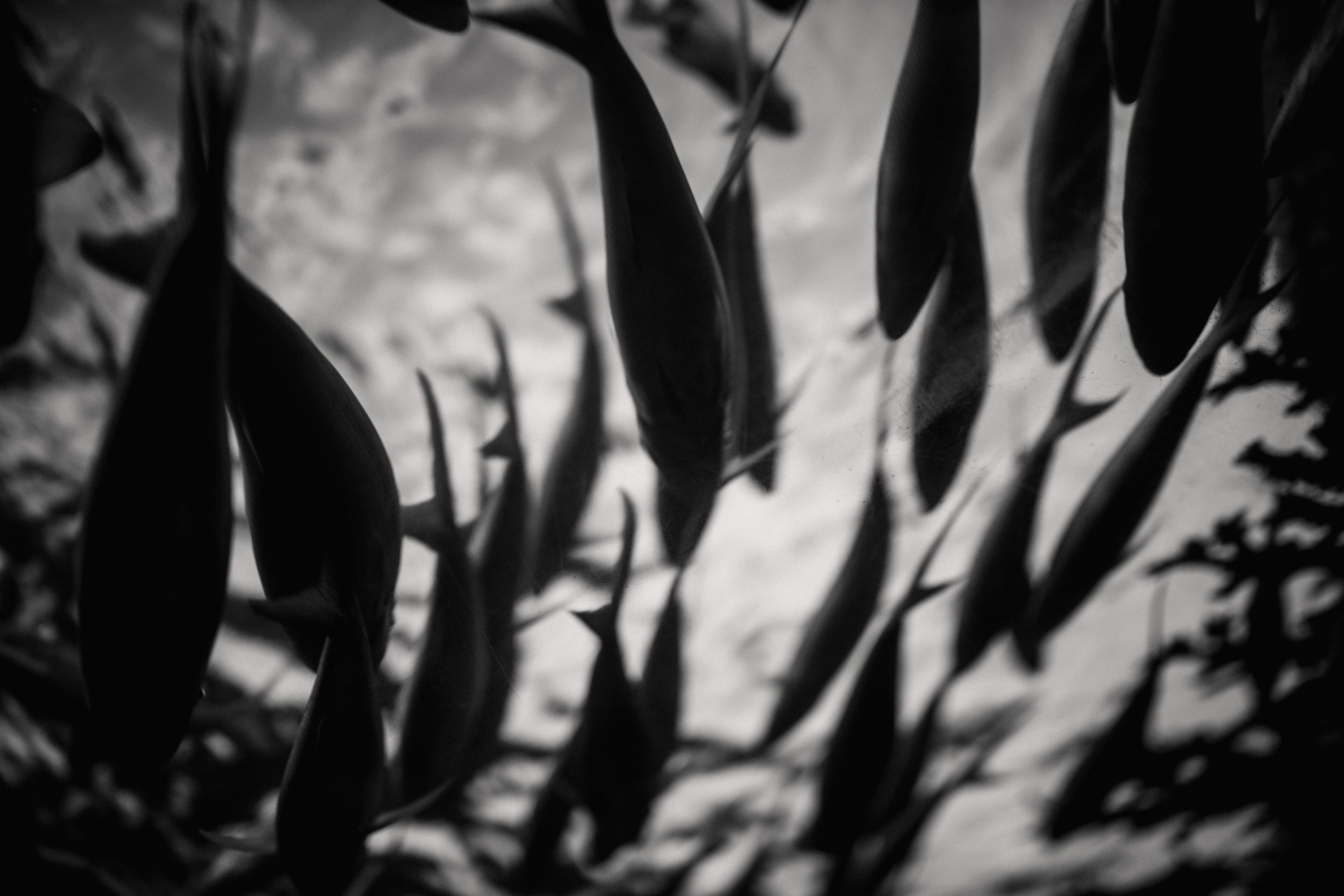
One aspect of the design that bothers me is not unique to the RF 50mm: it’s the placement of the Control Ring.
While I appreciate the ring overall, I find that its position on the very front end of many RF lenses is frustrating. Maybe it’s because I spent a lot of time shooting Fujifilm cameras and getting used to their aperture rings near the mount, but even if I set the Control Ring to something else, it’s generally a control that I want quick access to, and having to shuffle my entire hand up the lens to reach it is annoying enough that I basically don’t.
 Photo courtesy of my friend, Thomas Wong.
Photo courtesy of my friend, Thomas Wong.
In fact, I prefer to use my EF lenses using the Control Ring adapter because it means the ring is always in the same spot, predictable and easy to reach.
Depending on your preferences, this may or may not bother you, but it was an aspect of the RF 50mm that I never got used to.
Optical Performance
The RF 50mm is not simply an update of an old classic.
Canon has managed the improbable achievement of combining the utmost in optical precision and modern features with the beloved character and ineffable quality of rendering that made its predecessor so cherished.

The RF 50mm is, in a nutshell, the best 50mm (or 50mm equivalent) lens I have ever shot. To add a little context to that statement, I should mention that 50mm is my favourite focal length for general shooting, so over the years I’ve owned or shot with many lenses of this type, including the following:
- Canon EF 50mm f/1.8 STM
- Canon EF 50mm f/1.4
- Canon EF 50mm f/1.2L
- Sigma 50mm f/1.4 ART
- Fujifilm XF 35mm f/2 WR
- Fujifilm XF 35mm f/1.4 R
- Fujifilm GF 63mm f/2.8 R
- Olympus M.Zuiko 25mm f/1.8
- Olympus M.Zuiko 25mm f/1.2 PRO
Optically speaking, the RF 50mm performs significantly beyond my needs. It is spectacularly sharp right from ƒ/1.2, and the copy I tested was solid across the frame, gaining even more bite as I stopped it down.
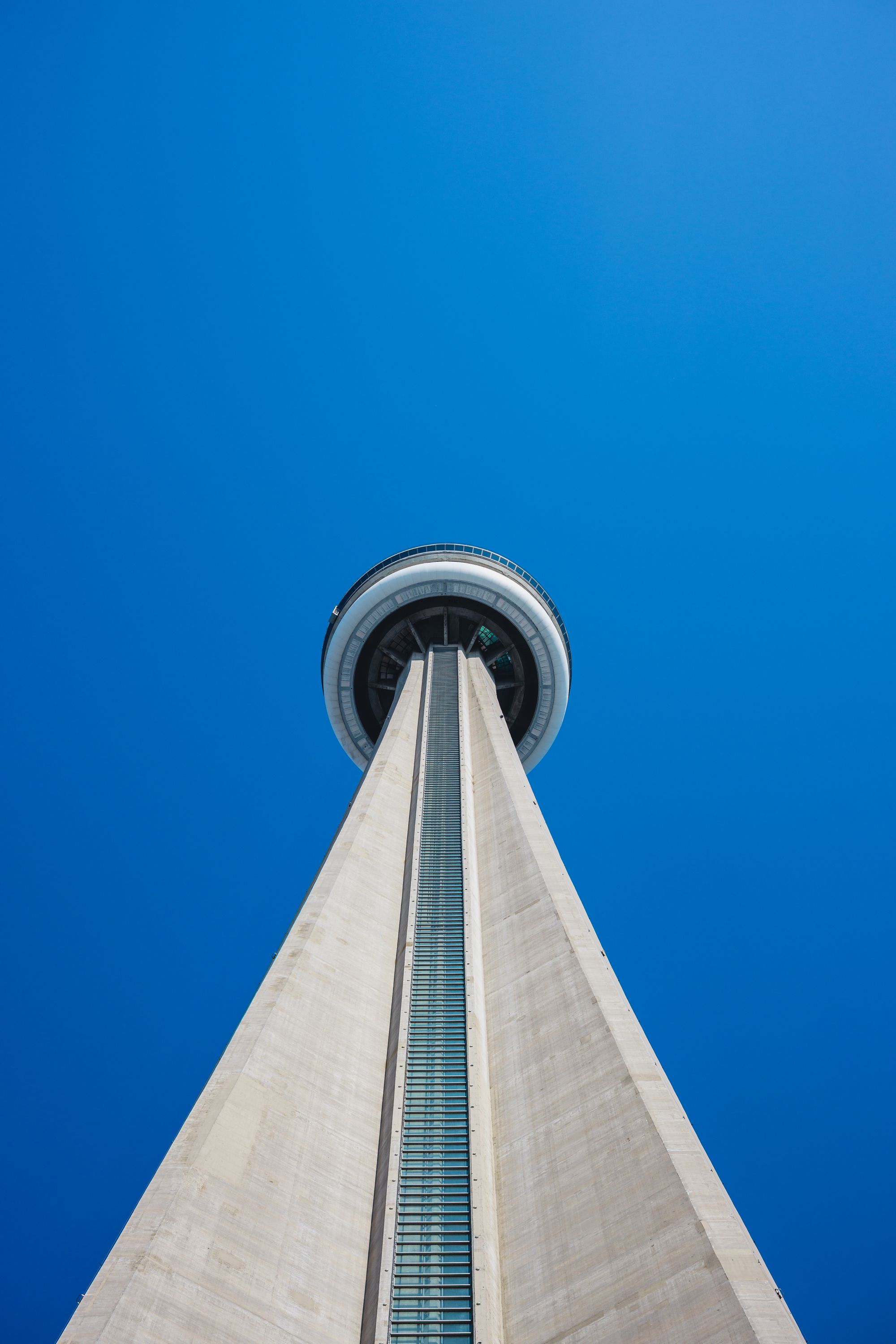
Sharpness is often discussed as a benefit of better lenses, but it’s actually not one of the main things I look for in a lens—most lenses these days are plenty sharp for me. The RF 50mm, in fact, turned out to be a bit too sharp in most cases. I had to spend more time in post-production for portraits shot with this lens because the acuity can be revealing to an unflattering degree.
That being said, I still prefer having sharpness I don’t need over needing sharpness I don’t have. It’s easy to dial it down in post, but you can’t add detail that wasn’t captured to begin with, so this is a trade-off I’d be happy to accept if I owned the lens.
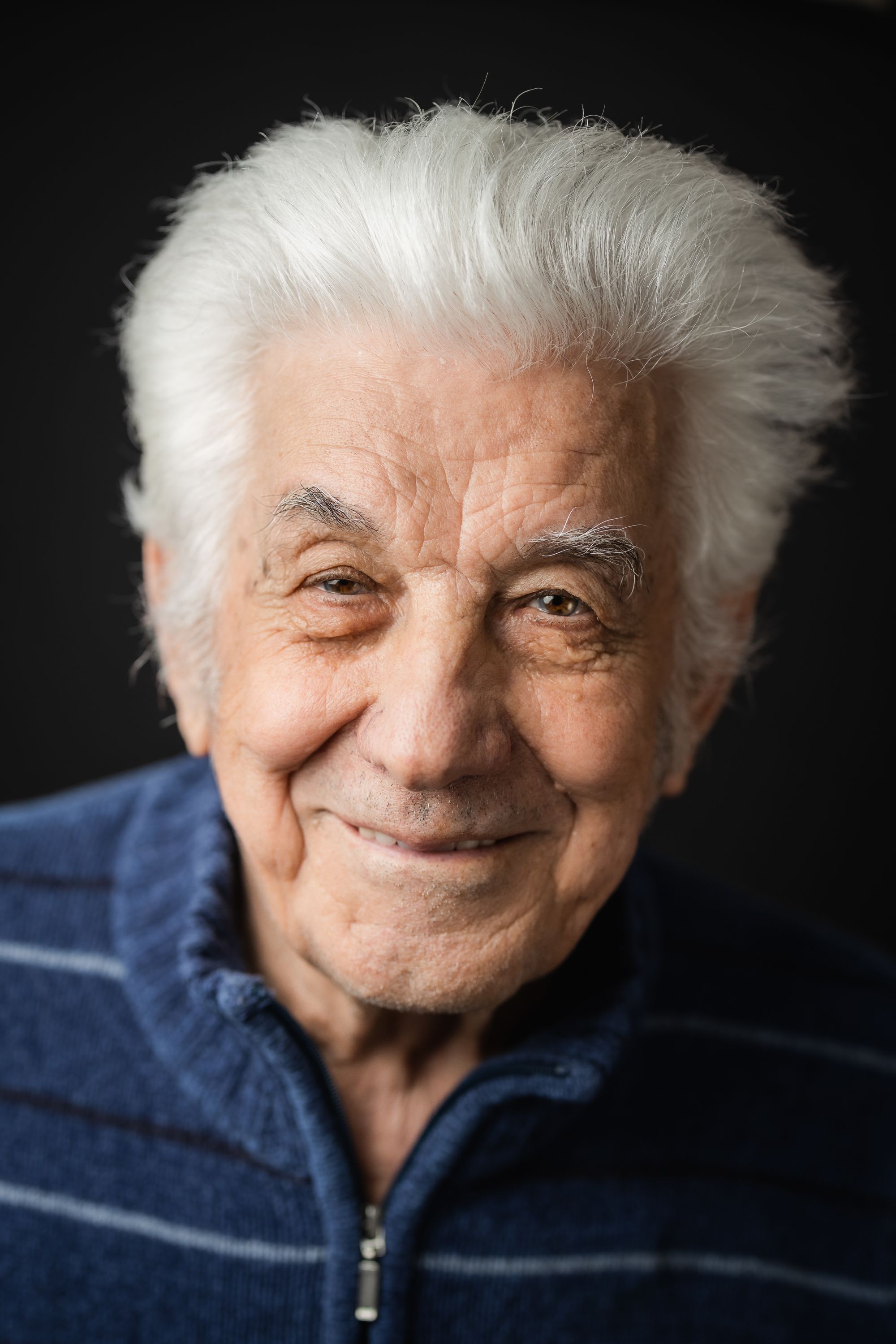
Still, this lens’ real appeal lies beyond the metrics. Yes, it’s sharp. Yes, it’s contrasty. But it also has a certain “pretty” quality to its rendering that’s falling out of fashion with many modern lens designs. It reminds me of the Olympus 25mm ƒ/1.2 PRO more than any other 50mm-equivalent lens I’ve shot.

This lens aims to balance technical demands with aesthetic ones, and pulls it off in a way that I find very compelling. Since it’s designed for full-frame cameras, that bright ƒ/1.2 aperture allows for some remarkable subject separation. Even from a distance, you can peel your subject out from a background effortlessly, allowing you to deploy the beauty of shallow depth of field from a greater distance than you could with a slower lens or a smaller sensor.
 I deliberately sought out an ugly background for this shot, just to see how effectively I could blur it away from this range.
I deliberately sought out an ugly background for this shot, just to see how effectively I could blur it away from this range.
With the focus limiter switch set to its full range, the lens will focus as close as 40cm from your subject. This isn’t quite as close as other competing lenses (including my cheap EF 50mm ƒ/1.8 STM), but unlike that lens, the RF is still wonderfully sharp even wide open at its minimum focus distance.
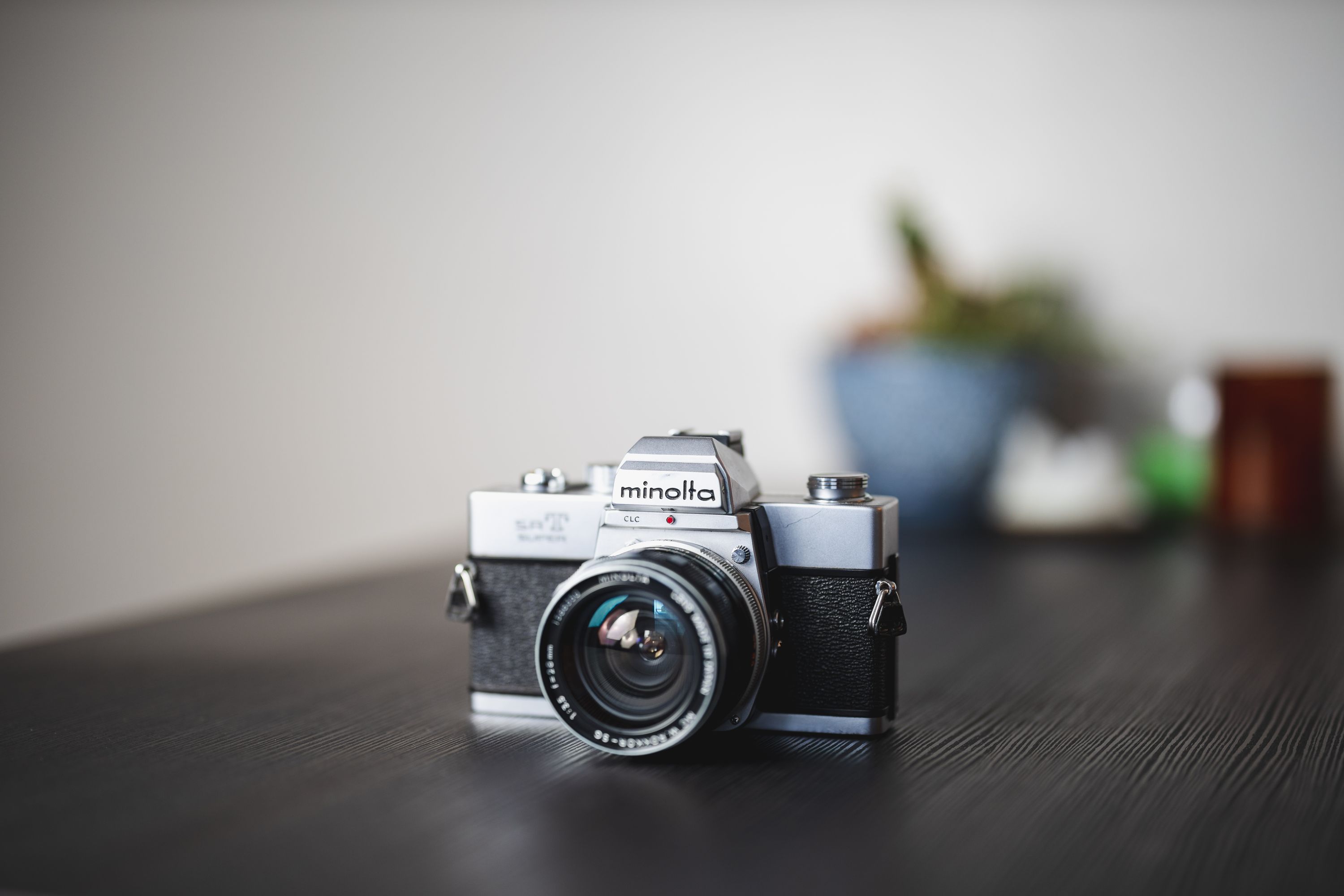
There’s a fair bit of vignetting wide open, as you might imagine, but a corrective profile tidies it up perfectly and I didn’t encounter any situations where that vignetting got in my way, so I can’t really complain.
Basically: this lens offers unprecedented performance when shooting wide open at ƒ/1.2, with a few trade-offs in terms of vignetting and distribution of sharpness across the frame that honestly didn’t bother me at all. But by ƒ/2.8, it’s essentially flawless across the board.

In Use
Most of my time with the RF 50mm was spent with it mounted on my EOS-R with the grip attached. I tend to like gripped bodies when I’m working, which is why I loved the Olympus E-M1X and shoot my E-M1 Mark II gripped a lot.
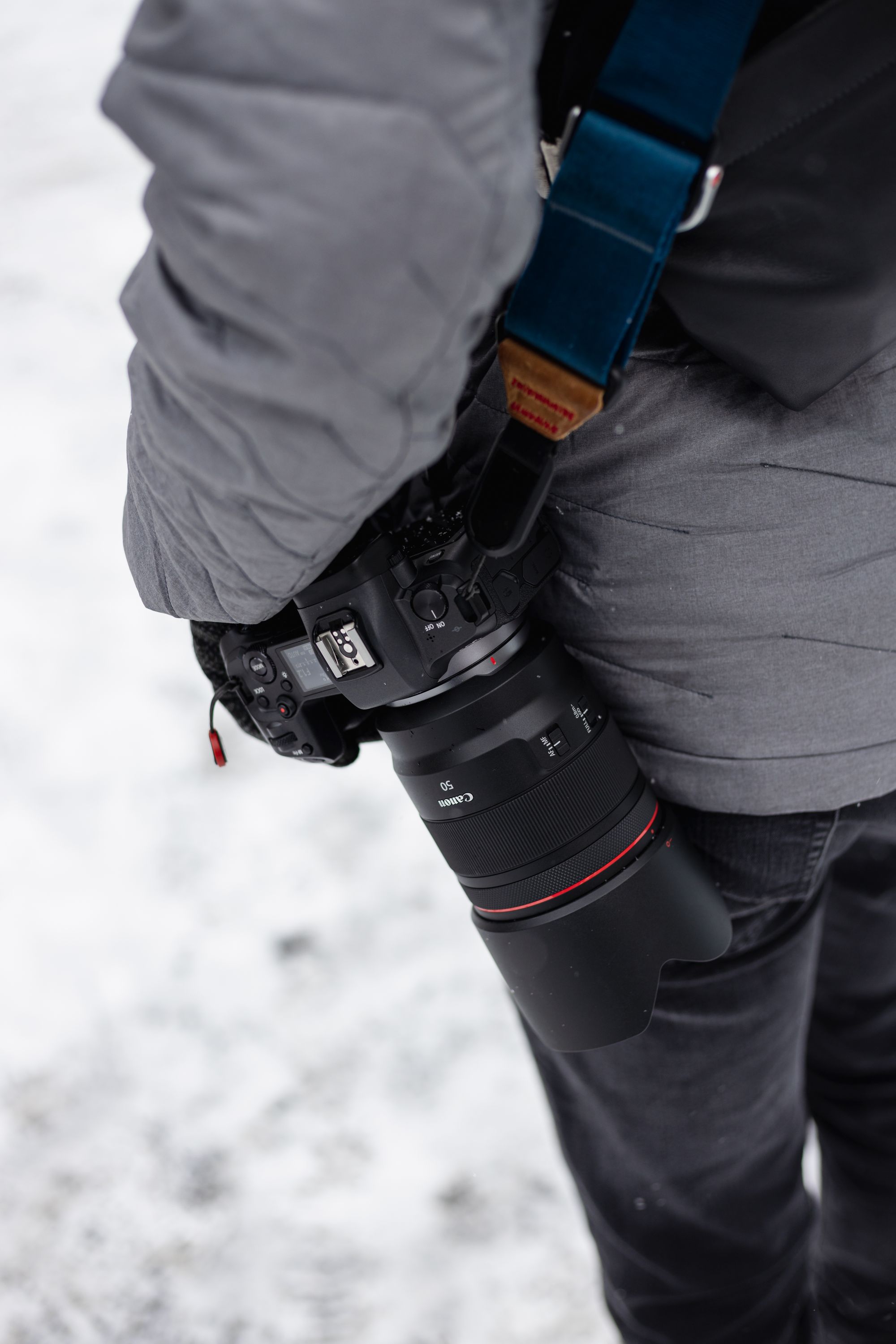 Photo courtesy of my friend, Thomas Wong.
Photo courtesy of my friend, Thomas Wong.
That combination is heavy, of course, and anything but subtle, but it balances well and feels sturdy.
Across portrait shooting, casual outdoor walks, and even some product work indoors, I found the RF 50mm to be a reliable companion, focusing with accuracy and confidence in any light condition.
I wasn’t able to test too many extreme weather situations in the time I spent with it, but I did shoot with it in some frigid temperatures thanks to a few late-winter cold snaps here in Toronto. As always, I took care to make the temperature transitions as gradual as possible by letting it spend time in the bag when I first went out into the cold and again as I brought it back inside, but there was no trace of condensation or fogging.
In fact, the lens and EOS-R both performed just fine at -20°C. My only frustrations were ergonomic ones: the placement of the Control Ring, as mentioned, and the lack of joystick on the camera body for easier movement of focus points while wearing gloves.

It’s a big lens, with a lot of glass inside, so focusing isn’t as lightning-fast as competitors on smaller mounts, like my Olympus 25mm PRO, but it managed to focus quickly enough that I wasn’t missing shots waiting for it to snap to attention, and my simple tracking needs were met without fuss. I didn’t have an opportunity to shoot anything that would stress the servo AF capabilities, mind you, so I can’t comment on how those hold up under pressure.
Thankfully, the setup still fit into my backpack with ease (I was grateful for the reversible locking hood), so while it’s definitely not a compact kit, it wasn’t any bulkier to carry around than my usual—just heavier.
Is It Worth It?
I have the advantage of not having bought the lens, so my view is unclouded by a desire to justify a huge purchase.
Instead, I can look at it dispassionately and try to articulate why or why not someone might want to spend the money on this over, say, the Sigma 50mm ƒ/1.4 ART, or one of the cheaper Canon EF-mount 50mm lenses on the market.
While many lenses give you the ability to sculpt your subject with shallow depth of field, the RF 50mm allows you to do so from a greater distance without incurring the usual penalty of messy, busy-looking bokeh or poor sharpness.
Still, with my EF 50mm ƒ/1.8 STM, I have no trouble getting beautiful bokeh for headshots.
 This was shot on a Canon 6D Mark II using my nifty fifty (EF 50mm ƒ/1.8 STM) lens and I honestly don’t have any complaints about the image quality. I sincerely doubt that an image like this would have been improved had it been shot on the EOS-R and RF 50mm ƒ/1.2.
This was shot on a Canon 6D Mark II using my nifty fifty (EF 50mm ƒ/1.8 STM) lens and I honestly don’t have any complaints about the image quality. I sincerely doubt that an image like this would have been improved had it been shot on the EOS-R and RF 50mm ƒ/1.2.
In fact, I always shoot it stopped down to get the face properly in focus. But when I take a few steps back, the bokeh behind my subject turns ugly pretty quick, especially if the subject is close to the background. It ends up being another constraint I have to work around; not the end of the world, but something to consider.
With the RF 50mm, that constraint is essentially lifted. I can deploy shallow depth of field as an effect from a greater range of distances, and with a greater degree of success owing to the superior sharpness of the lens and greater focus accuracy of the EOS-R vs DSLR predecessors.
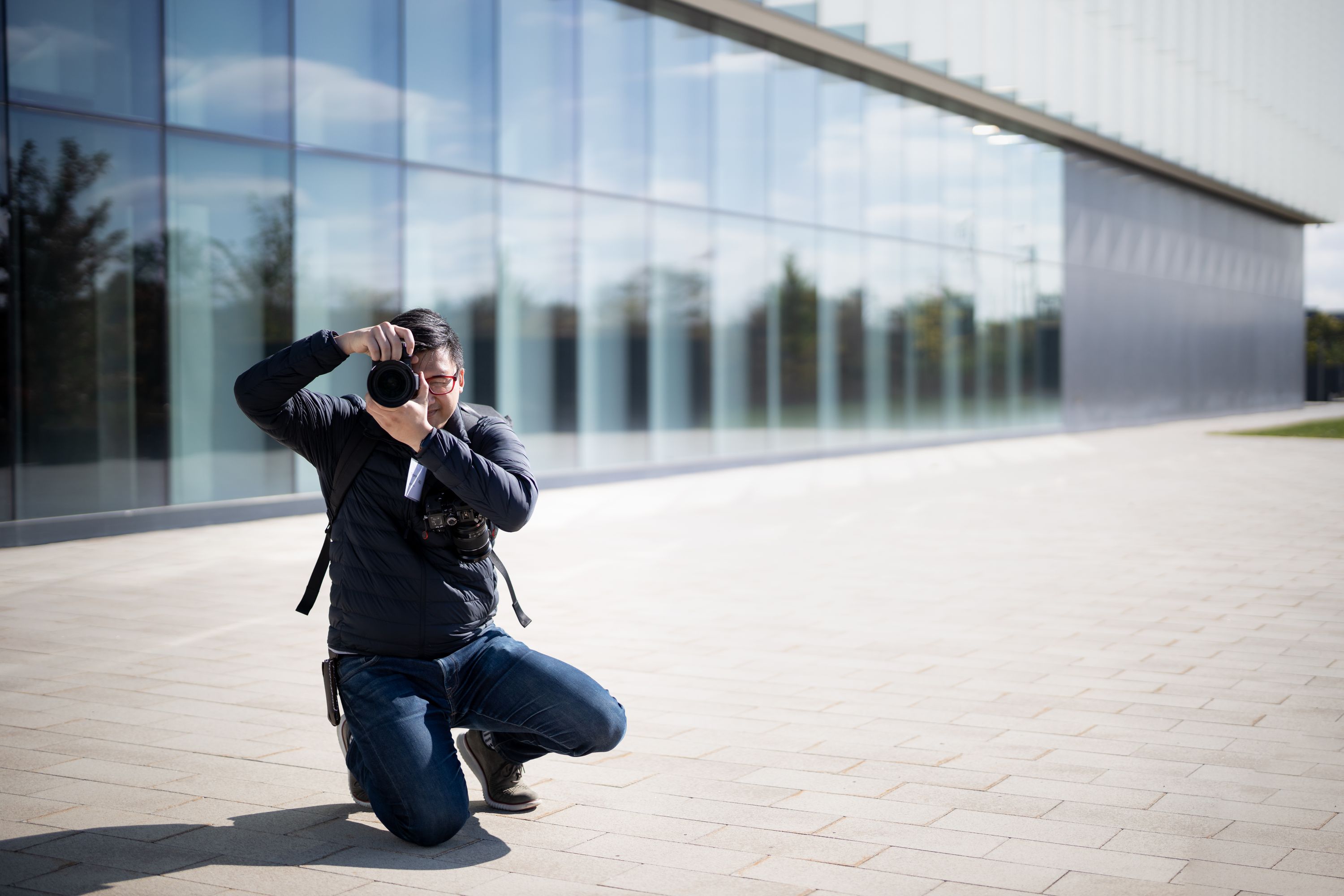 This kind of shot, where the subject is smoothly carved out of the background even from a distance, is simply impossible with lesser glass.
This kind of shot, where the subject is smoothly carved out of the background even from a distance, is simply impossible with lesser glass.
The question is whether or not that capability is actually important for your shooting.
If you’re mainly doing headshots in a studio, I honestly don’t think this lens has much of an advantage over its competitors. At close range, ƒ/1.2 has way too little depth of field to be flattering, unless you’re into shots where only one eyelash from one eye is in focus. I’m not, and neither are my clients.

I typically shoot headshots around ƒ/2.5 and I’m using flash for them if I’m indoors. That being the case, the difference between what I get from the RF and what I get from my fantastic nifty fifty (yes, my main portraiture money maker is a $100 plastic lens) are essentially negligible.
I would not buy this lens if that represented the majority of my shooting.
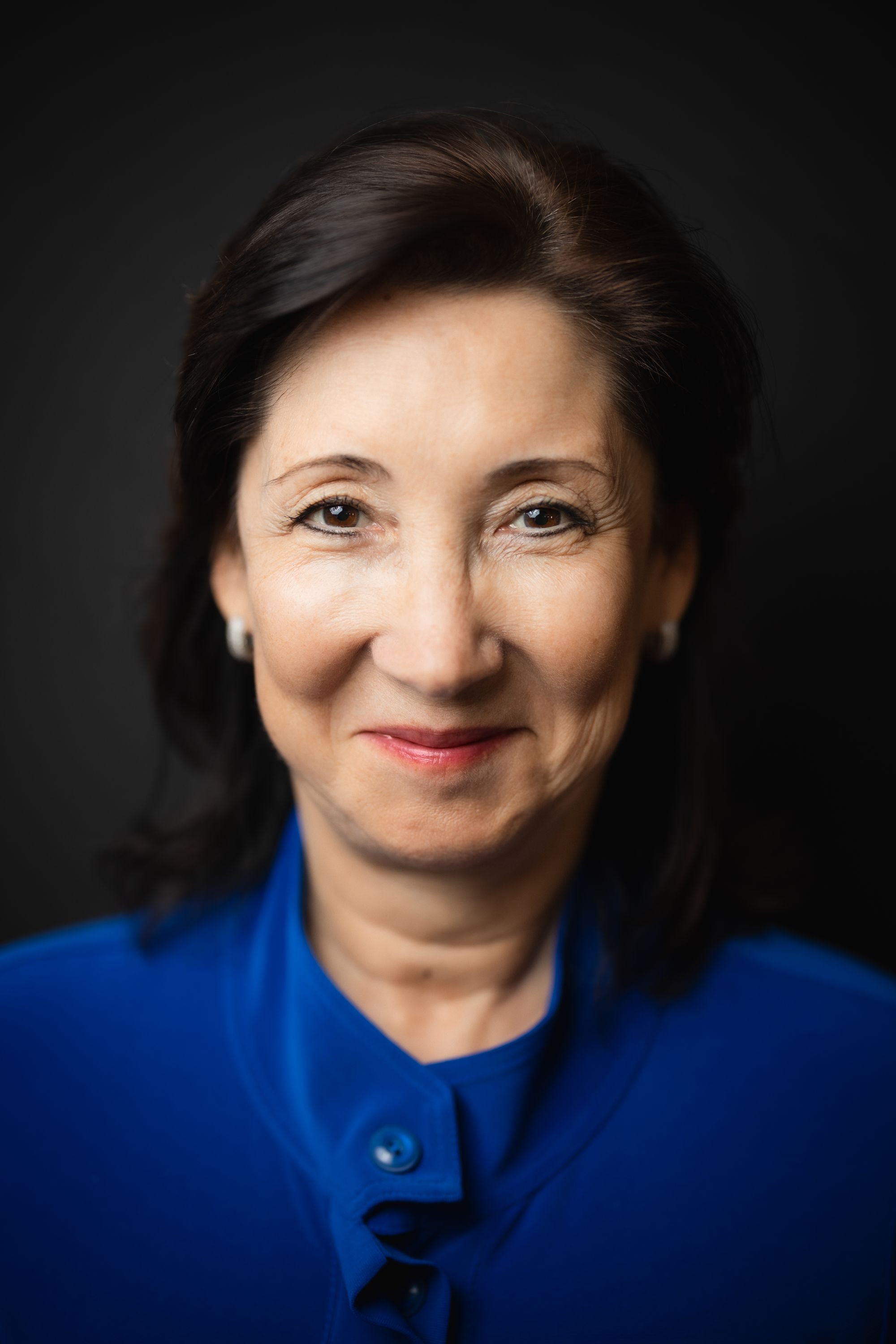
However, there are situations where the RF 50mm does provide a concrete advantage. Bokeh at range is one, but so is the ability to focus in near darkness for challenging reportage situations where you can’t control the light.
Remember that light-gathering is a double-edged sword, though. On bright sunny days, it’s impossible to shoot this lens wide open without an ND filter on the EOS-R using the mechanical shutter. There’s just too much light getting in.
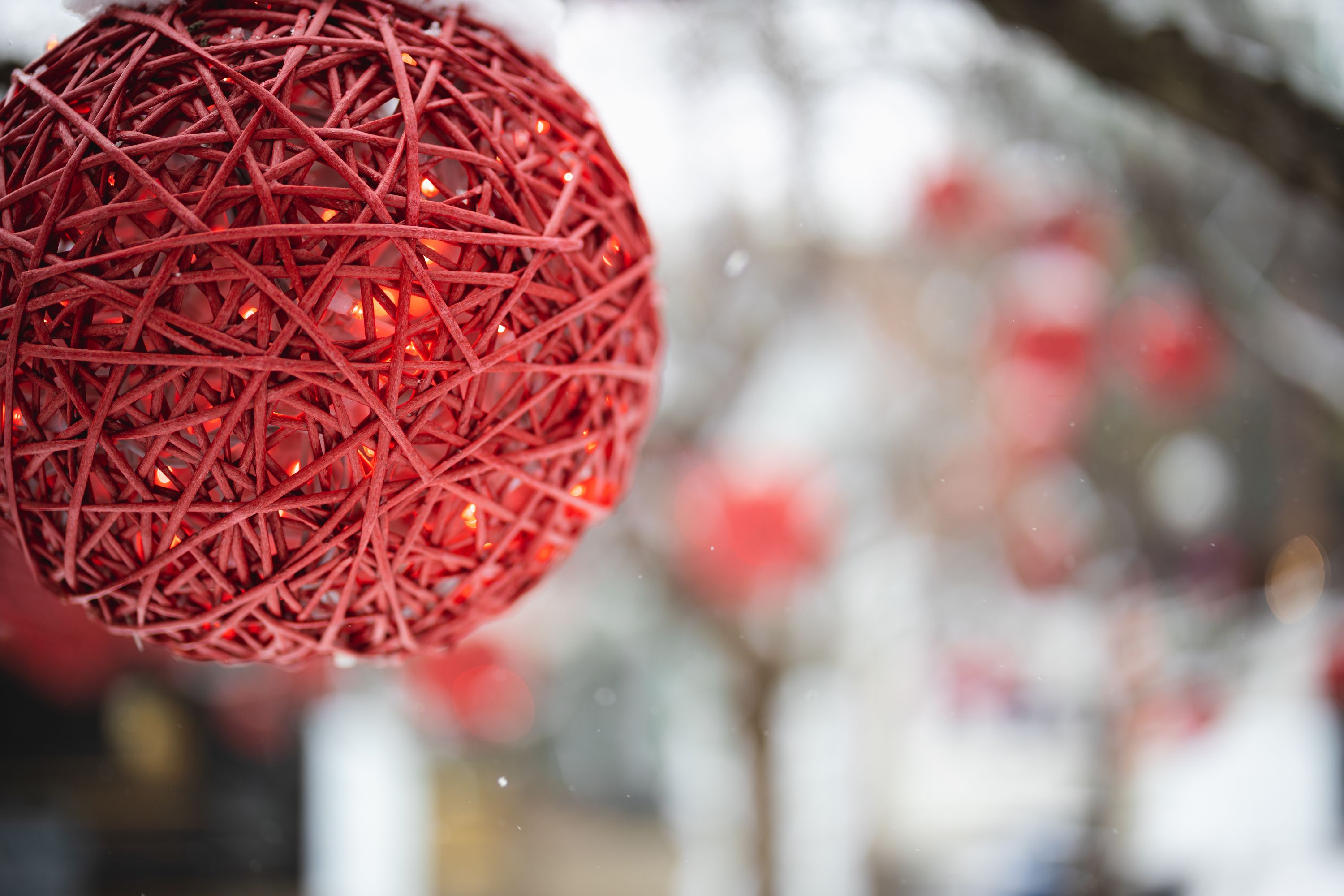
Once the R5 lands and Canon brings the full force of its mirrorless intentions to bear, I expect that this lens and that body will form an unstoppable kit for photojournalists, conflict correspondents, and embedded assignment photographers covering delicate stories in challenging environments.

Studio, wedding, and other fair weather photographers have less to gain, but that won’t stop them from buying this lens anyway. It’s desirable, and sometimes we buy things not because we need them but because we want them. I think that’s perfectly fine if you can make the purchase responsibly, especially if it brings you satisfaction and inspiration.
For those photographers, buying this lens represents the epitome of chasing that last ten percent of sparkle, of polish, of specialness in their output—even though it’s almost certain that only they will notice and appreciate it.
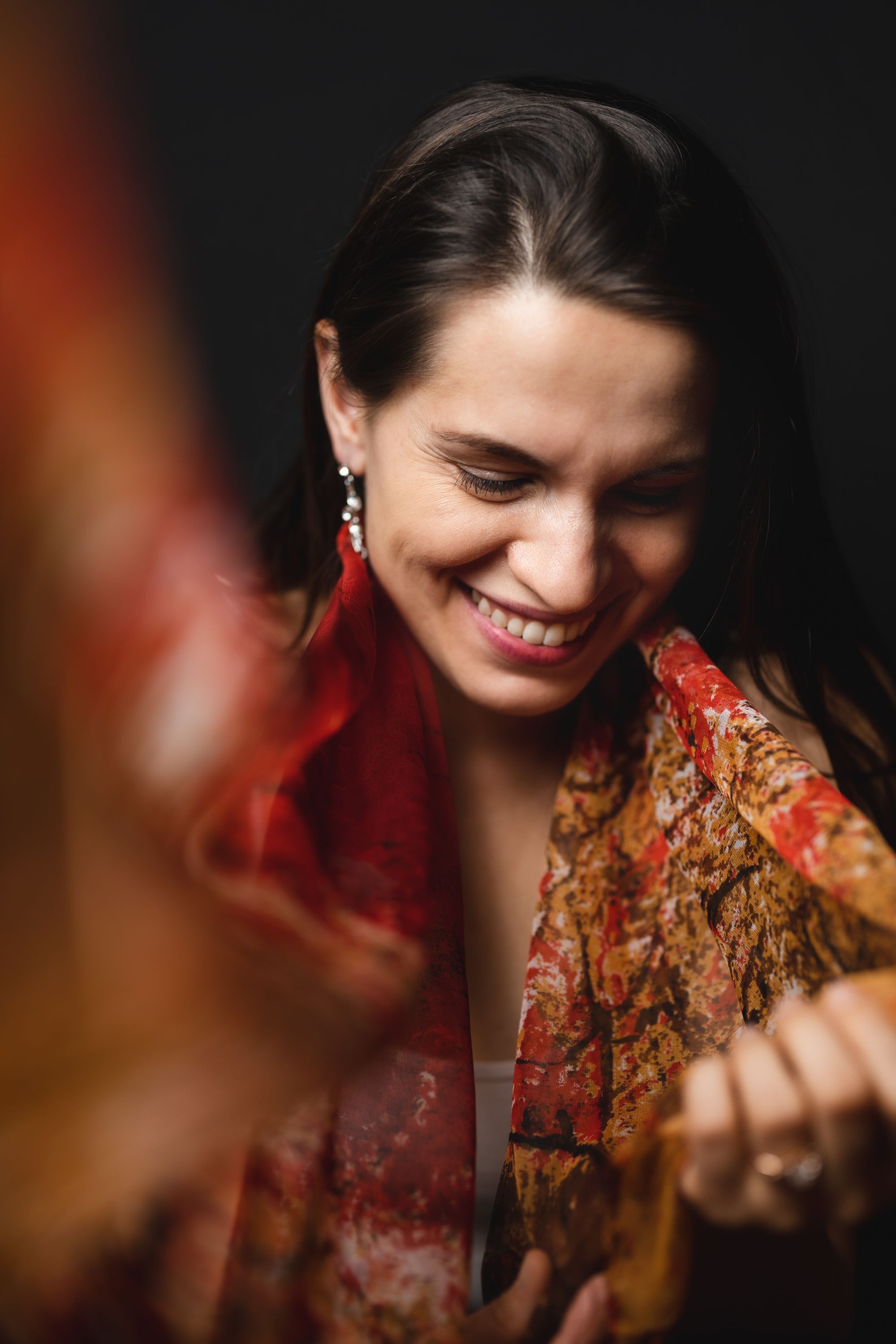
For everyone else, it’s still valuable as a “hero” lens. It’s something to aspire to, and something that embodies Canon’s incredible engineering prowess, aesthetic sensitivity, and willingness to push the envelope in stark contrast to the prevailing notion that they’re slow and conservative.
There is nothing conservative about this lens. It is a marvel of photographic technology and I’m grateful to have had the chance to shoot with it.

Knowing that this kind of talent is being poured into Canon’s new products really builds confidence in the future of the RF mount, particularly since all of these advancements will trickle down to the lenses that the rest of us can afford.
I may not be able to buy the RF 50mm ƒ/1.2L, but you can bet that I’ll be first in line if a 1.4 or 1.8 variant shows up.